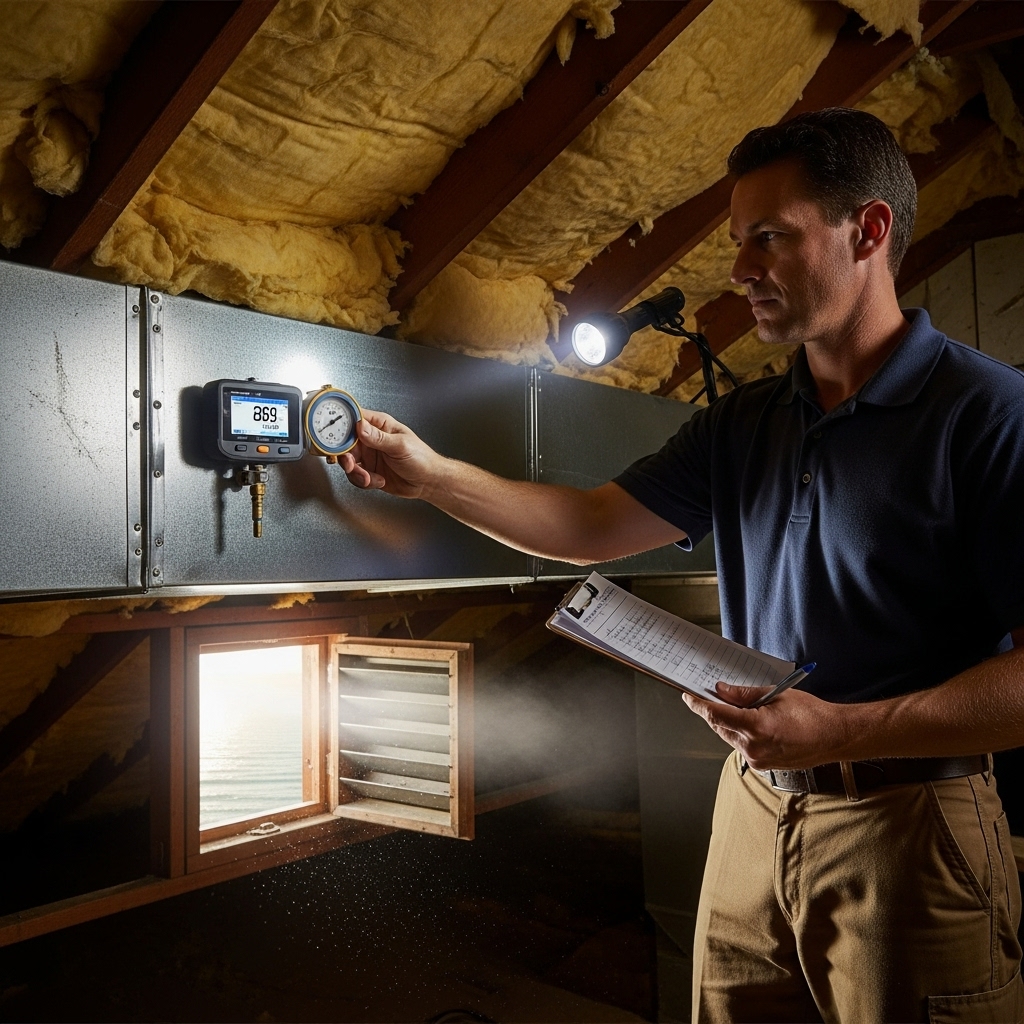What to Expect from a Duct Replacement Estimate in Malibu
Requesting a duct replacement estimate in Malibu is not just about receiving a document; it is about beginning a structured process that leads to a quieter, more comfortable, and healthier home. The best estimates are built on measurements, clear design intent, and transparent communication. They describe how your new duct system will be engineered, installed, and verified to perform. Understanding what should be included empowers you to ask sharper questions and compare proposals based on substance rather than generalities. From the first phone call to the final walkthrough, clarity is your greatest asset.
Because Malibu homes span beachfront bungalows, hillside properties, and canyon residences, access conditions and environmental factors vary widely. An accurate estimate reflects those realities. It accounts for attic and crawlspace logistics, insulation and sealing needs, and any design updates required for rooms that have always struggled with comfort. Early in the discussion, you should hear how the team will assess your current system, develop a plan, and deliver results. If you are just starting your research, learning the building blocks of a professional duct replacement estimate will help you move forward with confidence.
The Anatomy of a Strong Estimate
A strong estimate is detailed, readable, and grounded in data from your home. While formats vary, the most reliable proposals consistently include several key components that show how the project will unfold and how performance will be verified.
- Assessment summary: Notes and photos from the site visit, including duct sizes, routing, insulation condition, and accessibility constraints.
- Design intent: A description of trunk and branch sizing, register placement, and return-air strategy guided by recognized methods.
- Materials and methods: Clear identification of duct materials, insulation targets, sealing methods, and support spacing.
- Access and logistics: How the team will enter and work in attics or crawlspaces, protect finishes, and manage debris.
- Verification plan: Specific tests and balancing steps to confirm performance after installation.
- Schedule outline: A logical sequence from removal through testing, plus communication milestones.
Site Visit: What the Estimator Should Do
The site visit is where the groundwork for an accurate estimate is laid. Expect the estimator to ask about comfort concerns, air quality priorities, and rooms that are persistently hot, cold, or noisy. They will measure existing ducts, note restrictions, and check insulation and sealing quality. Static pressure readings reveal whether your current layout starves the system for air. Photos document conditions and inform routing choices. If your home has an addition or a unique layout, the estimator should discuss how the new design will adapt to those features.
Design Intent: The Bridge Between Assessment and Installation
Design intent is the most important part of a professional estimate. It explains how the final system will achieve balanced airflow, quiet operation, and durability. You should see references to trunk sizing, branch lengths, register selection, and return-air improvements. In Malibu, where high ceilings, expansive windows, and open plans are common, design intent should address how air will be distributed to avoid drafts and ensure good mixing. A clear design prevents guesswork during installation and sets expectations for verification.
Materials and Methods: Clarity You Can Trust
Proposals should list the materials selected for your environment and access conditions. They might specify sheet metal trunks for stability, high-quality flexible duct for final connections, and duct board where appropriate. More important is the description of sealing methods, insulation, and supports. Look for mastic at joints, collars, and boots; continuous insulation jackets; and proper spacing for hangers or supports to prevent sagging. The estimate should show that the installer understands Malibu’s coastal factors and has chosen components accordingly.
Logistics and Home Protection
Attic and crawlspace work requires careful planning. A thorough estimate outlines how the crew will stage materials, protect finishes, and manage daily cleanup. If you have narrow access hatches or low-clearance areas, the plan should address how sections will be fabricated and installed safely. This level of detail protects your home and reduces disruptions during the project.
Verification: The Promise of Performance
A strong estimate includes a verification plan. After installation, technicians should measure static pressure, adjust dampers, and confirm airflow where practical. They will also check for leakage in accessible areas and review register performance in key rooms. The result is a system that does not just look complete but proves its performance with data. Documentation at the end helps you understand the new layout and how to maintain it.
How Malibu’s Environment Affects Estimates
Coastal air, marine layers, and seasonal smoke events require careful material and design choices. Estimates should mention corrosion-conscious hardware, robust insulation levels for attic runs, and sealing strategies that protect indoor air quality by preventing infiltration from unconditioned spaces. If your home has historically struggled during certain weather patterns, ask how the design addresses those scenarios.
Comparing Multiple Estimates
When you receive more than one proposal, compare them based on their clarity and completeness. Which estimate explains how airflow will be balanced? Which outlines return-air improvements? Which provides a verification plan? Look for alignment with your goals: quieter operation, even temperatures, and healthier air. Detailed, transparent proposals indicate a contractor who values measurable results over vague promises.
Preparing for the Appointment
You can help the estimator by gathering relevant information and preparing the home. Make a list of comfort issues by room and note when they occur. Clear access to attic hatches and return grilles. If possible, share any renovation history or prior HVAC work that might affect routing. This preparation shortens the visit and improves the accuracy of the plan.
Common Questions to Ask
Arrive at the estimate meeting ready to engage. Thoughtful questions uncover how each company works and whether their plan reflects your priorities.
- How will you size ducts and account for room-by-room requirements?
- What is your return-air strategy to keep noise down and airflow balanced?
- Which materials will you use and why are they suited to my home?
- How do you seal joints and boots to prevent leakage?
- What insulation levels do you target for attic runs in our climate?
- What measurements will you take after installation to verify performance?
Mid-Project Discoveries and Change Orders
Removal of old ductwork can reveal surprises: blocked chases, framing conflicts, or previously hidden damage. A well-prepared estimate explains how such findings will be handled. The contractor should document conditions, propose options, and confirm any adjustments before proceeding. This transparent approach protects both the design intent and your confidence in the process.
Timeline Expectations
While each project is unique, estimates should include a logical timeline. Expect a sequence that begins with assessment and design, moves through removal and installation, and ends with balancing and documentation. Communication touchpoints keep you informed of progress and any adjustments. Malibu’s access and site conditions can influence scheduling, so make sure the timeline reflects your home’s realities.
After the Estimate: Next Steps
Once you select a proposal, the contractor will finalize the design, order materials, and schedule the installation. You will receive guidance on preparation and access, and the team will confirm expectations for daily cleanup and protection. After completion, you should receive documentation of damper positions, register selections, and test results. This information will be helpful for future service and ensures you know how the system was designed to operate.
Frequently Asked Questions
Q: How detailed should my estimate be? A: It should summarize assessment findings, define design intent, specify materials and methods, outline logistics, and include a verification plan.
Q: Will the estimator check static pressure? A: Yes. Pressure readings help reveal restrictions and ensure the new design supports proper airflow.
Q: Do Malibu homes require special consideration? A: Coastal air, marine layers, and varied architecture influence materials, sealing, and insulation strategies.
Q: Can I keep my existing HVAC equipment? A: Often yes, provided the duct design matches the equipment’s airflow capabilities.
Q: How disruptive is the installation? A: Contractors should explain staging, access, noise expectations, and daily cleanup routines.
Q: What if hidden issues are discovered? A: Reputable teams document findings and collaborate on solutions before adjusting the plan.
Q: Will I receive documentation at the end? A: Yes. Expect notes on damper settings, register choices, and testing results for future reference.
Confidence Through Clarity
Understanding the components of a duct replacement estimate empowers you to choose a contractor who can deliver the comfort, quiet, and air quality you want. Look for assessments grounded in measurements, designs that reflect your home’s layout, and verification plans that prove performance. With the right proposal, you will know exactly how the project will proceed and what results to expect.
Get Started with a Professional Plan
If you are ready to move from research to results, schedule a site visit and request a detailed, measurement-based proposal. Share your comfort priorities, ask about verification, and review how the design addresses rooms that have never felt quite right. Then, choose a start date that fits your schedule and prepare for a smoother, quieter home. When it is time to proceed, arrange your duct replacement with a team that explains, documents, and validates every step.

